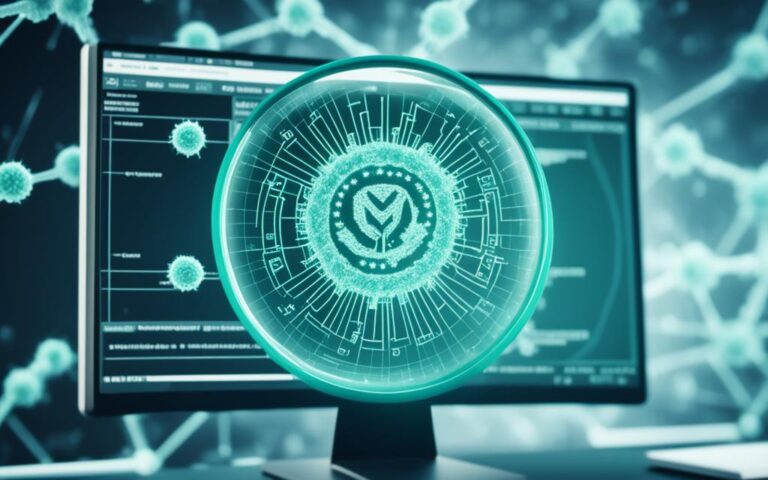Navigating the Complex World of Security Threat Removal
As the digital landscape continues to evolve, so do the threats that lurk within it. Security threat removal has become more challenging than ever before, with cybercriminals constantly devising new tactics to penetrate systems and compromise sensitive data.
In today’s cyber landscape, it is crucial to stay informed about the ever-changing nature of digital dangers. Understanding the risks and implementing effective threat removal strategies is essential for individuals and businesses alike.
The Kaspersky Lab Global IT Risks Survey reveals the alarming statistics surrounding cybersecurity. Over the past 12 months alone, 90% of companies have experienced some form of external attack, with 46% reporting an increase in the number of attacks. This highlights the pervasive nature of threats in the current cyber landscape.
Preventing and dealing with security breaches has become a top priority for organizations. According to the survey, 50% of companies prioritize guarding against cyberthreats. With the rise in remote working, bring-your-own-device (BYOD) policies, cloud storage, virtualized systems, and social media use in the workplace, the complexity of these threats continues to escalate.
It is crucial for individuals and businesses to understand the evolving nature of security threats and take proactive measures to stay safe in the cyber landscape. Stay tuned for expert advice on threat removal and how to navigate the complex world of cybersecurity.
The Evolution of Malware
Over the past 25 years, the nature of malware has undergone significant changes, giving rise to more complex threats in the digital landscape. The Kaspersky Lab Global IT Risks Survey sheds light on the impact of factors such as growing mobility, the trend towards BYOD (Bring Your Own Device), the storage of business data in the cloud, increased use of virtualized systems, and the widespread adoption of social media in the workplace. These developments have had a profound effect on corporate security, demanding increased vigilance and proactive measures to combat cyberthreats.
The survey reveals that preventing and addressing security breaches ranks as a primary concern for 50% of companies, with 27% prioritizing protection against cyberthreats. However, it’s important to note that malware attacks are not diminishing; rather, they are evolving and may not be readily identified as traditional malware attacks. In the past 12 months alone, a staggering 90% of companies experienced some form of external attack, with 46% of them reporting an increase in the number of attacks.
Kaspersky Lab, a leading cybersecurity company, discovers hundreds of thousands of new malware samples on a daily basis, underscoring the magnitude of the problem. Keeping up with the evolving nature of malware is crucial in safeguarding against cyber threats and ensuring robust cybersecurity measures are in place.
Emerging Trends in Malware
Malware has become increasingly sophisticated and adaptable, with cybercriminals employing various techniques to exploit vulnerabilities and infiltrate systems. Here are some emerging trends in malware:
- Polymorphic malware: These malicious programs constantly mutate, making it difficult for antivirus software to detect and eliminate them.
- Ransomware: This type of malware encrypts victims’ files, holding them hostage until a ransom is paid for their release.
- Fileless malware: This type of malware operates in memory and leaves no trace on the victim’s disk, evading traditional security measures.
- Mobile malware: With the proliferation of mobile devices, cybercriminals have shifted their focus to target smartphones and tablets with malware tailored for mobile platforms.
The continuous evolution of malware poses significant challenges to businesses and individuals alike. It is crucial to stay informed about the latest threats, employ robust cybersecurity measures, and implement regular security awareness training to mitigate the risks.
New Motives and Tactics in Cyberattacks
Cybercriminals have evolved into well-established organizations, employing sophisticated methods of attack to exploit individuals and businesses alike. One of the tactics cybercriminals employ is monitoring individuals’ social media activity to gather personal information and launch targeted attacks. These attacks often take the form of precision spear phishing, where cybercriminals craft convincing emails or messages to trick their victims into divulging sensitive information or inadvertently installing malware.
A significant increase in ransomware attacks has also been observed in recent years. With ransomware, cybercriminals encrypt victims’ files, rendering them inaccessible, and demand a ransom for their release. This type of attack has proven to be highly lucrative for cybercriminals, as victims often feel compelled to pay the ransom to regain access to their data.
It is important to recognize that cyberattacks are not limited to specific types or motives. Cybercriminals employ various tactics and motives, adapting their strategies to maximize their gains. Motives can range from financial gain and theft of sensitive information to espionage and disruption of critical infrastructure. With cyberattacks evolving from isolated acts of computer vandalism to purpose-built attacks designed to make illegal money, businesses now face a more complex threat landscape.
It is imperative for organizations to be prepared and proactive in protecting against cyberattacks. Cybersecurity measures, such as robust network security, regular software updates, and employee education and awareness programs, play a crucial role in safeguarding against these evolving threats.
Tactics Employed by Cybercriminals:
- Monitoring social media to gather personal information
- Precision spear phishing attacks targeting individuals
- Ransomware attacks encrypting victims’ files
By understanding the motives and tactics employed by cybercriminals, businesses can implement effective cybersecurity strategies to mitigate the risk of cyberattacks and safeguard their digital assets.
Comparison of Traditional and Modern Cyberattack Tactics
| Tactic | Traditional Cyberattacks | Modern Cyberattacks |
|---|---|---|
| Social Engineering | Basic phishing emails | Precision spear phishing attacks |
| Malware | Simple viruses | Advanced ransomware |
| Attack Motive | Pranks or personal satisfaction | Financial gain, espionage, disruption |
Preparing for Cybersecurity Challenges
One of the biggest challenges in combating cybercrime is the skills gap within the labor market. Cybercriminals are investing heavily in their own infrastructure and services, while there is a shortage of qualified cybersecurity professionals. This has created a negative employment trend, with fewer people entering the security field and companies struggling to find the talent they need. It is essential for businesses to invest in cybersecurity education programs to combat this trend and stay ahead of cyber threats.
Engaging a third party for managed detection and response (MDR) can also help alleviate the burden on internal security teams. MDR solutions provide the resources needed to detect and respond to threats effectively, even when IT teams are overwhelmed.
By adopting proactive approaches to cybersecurity and investing in the right people and technologies, businesses can minimize the risk of cyberattacks and ensure the safety and security of their data and systems.
| Cybersecurity Challenges | Skills Gap | Managed Detection and Response |
|---|---|---|
| Increasing cybercrime | Shortage of qualified cybersecurity professionals | Engaging third-party experts |
| Emerging threats and evolving attack techniques | Negative employment trend in the security field | Alleviating burden on internal security teams |
| Protecting sensitive data and systems | Need for cybersecurity education programs | Detecting and responding to threats effectively |
Conclusion
In today’s complex cyber landscape, prioritizing cybersecurity and effective threat removal is crucial for businesses and individuals alike. With the evolution of malware, the emergence of new motives and tactics in cyberattacks, and the challenges faced in the field of cybersecurity, it is imperative to stay informed and proactive in safeguarding digital assets.
Understanding the evolving nature of digital threats is the first step towards effective defense. By recognizing the trends and methods employed by cybercriminals, organizations can tailor their security measures to mitigate risks. Investing in cybersecurity education and training equips individuals and teams with the knowledge and skills needed to combat these evolving threats.
However, the complexity and ever-changing nature of cyber threats often exceed the capabilities of internal security teams. Managed detection and response (MDR) solutions can provide the necessary resources to detect, respond to, and neutralize threats effectively. By partnering with MDR providers, businesses can ensure round-the-clock monitoring and expert support, even when internal teams are overwhelmed.
To stay safe in the digital world, it is essential to adopt a proactive approach to cybersecurity. Keeping abreast of the latest trends, best practices, and technological advancements allows organizations to stay one step ahead of potential threats. By prioritizing cybersecurity, investing in education and training, and leveraging managed detection and response solutions, businesses can strengthen their defense against digital threats and protect their valuable data and systems.












